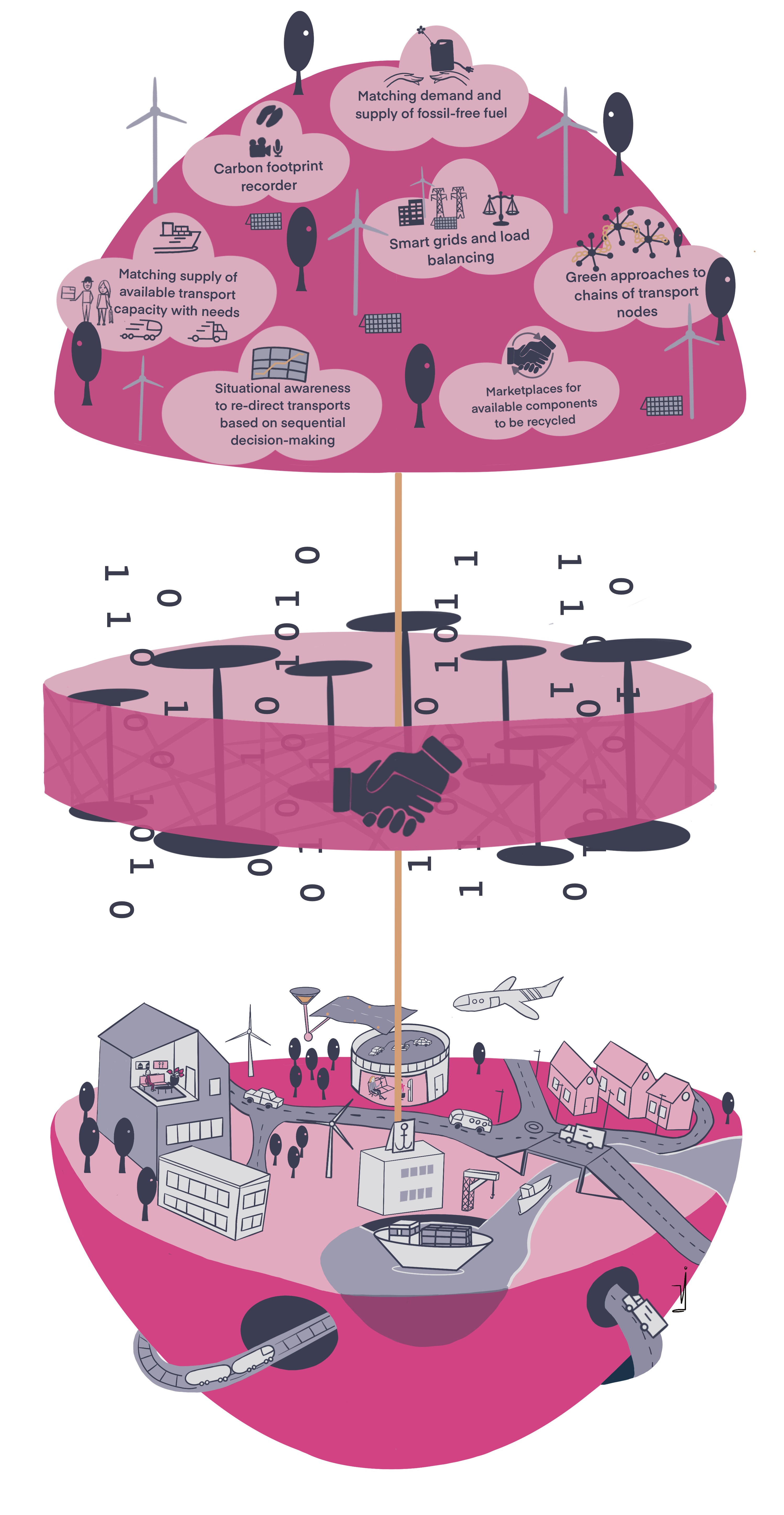Digitization and logistics - trends
Data flow management and digitization have a big impact on logistiocs. The major trends are:
- The emergence of cloud computing. In general, data storage, including services, is increasingly outsourced making companies as AWC, Microsoft Azure, Google increasingly dominant players and cloud services becoming important business models. Within this trend there is tendency towards building new decentralized cloud services enabling operators to make their own networks. The concept of Peer2Peer network development whereby individual companies can access data between another one the one hand facilitated by cloud services, but on the other hand jeopardized by dominant market forces when preventing companies from developing their own independence and data facilities. More
- The growth of tier tech companies. The pandemic has shown that there are big digital markets that are not dominated by GAFAM (Google, Amazon, Facebook, Apple, Microsoft). These services relate to services as payment providers, cloud service providers, corporate communication services employees’ digital identities. This also includes companies selling their wares “as a service” based as a pay-per-use basis through the cloud. In addition, there is also increased competition, such as competing clouds and attacks on main franchizes, such as online search and ecommerce, lower fees for App providers and videoconferencing services. More
A wide variety of services is being provided allowing business and public authorities the opportunity to rend services. There are different ways in which responsibility can be divided up between a cloud service provider and a user. The primary distinction between these different service arrangements is how much of the total software and hardware stack is managed by the user vs. by the cloud provider. The chart below shows how responsibility is shared in each model.

Illustration Cloud based service arrangements
- Enhanced supply chain vulnerability. 3 issues:
- Tech shocks - the increasing global demand and dependency for technological hardware – i.e. memory chips essential for household products, automation, analyses, AI, robotics, calculation power, planning – versus its limited global production capacities
- Delivery shocks - the unbalance between the high demand for goods and unreliable delivery performance of many production facilities due to the national measures to curb the effects of the Covid-19
- Security shocks - Cybersecurity infringements and hacking.
- Convergence of the telecoms and computer industry into one. Computing clouds can power a mobile network. Thereto, 5G can be conceived as a set of services, that can be turned into software, or virtualized, rather than as a collection of switches and other hardware. The telecoms industry is less propriety based. The result being that networks can turn into platforms for software, add-ons, just as mobiles turned into smartphones which run apps. The networks will allow new automated function connecting equipment. More
- Shift towards shared ownership and control of online platforms. In the creative economy online platforms have reached into multibillion Euro valuations based on content posted by their users. This has led to an imbalance of power between propriety platforms and the creator who use them. The platforms can allow creative individuals to share content, build an audience and make money in various ways. The next step is creators to build, operate and own the product and platform they really rely on. Co-operative ownership has struggled because of challenges in scaling up decision making and attracting investment. But new technologies promise to remove these barriers. Decentralized networks should allow ownership to be distributed via tokes, which are earned for contributors to the network and which often confer governance risks. More
- Innovation at the edge. Edge computing is the next growth path – the scaling. It also constitutes the baselines of the EU data policy aimed at digital transformation, where the digital service touches the physical world. Digital transformation is focused on the enablement of better products, services, experience, or business models. This is only possible if companies can make a shift in how data is gathered, moved, stored, or processed. Enter the edge.
The edge should allow companies, organization, the ability to scale. Terms: predictive maintenance and intelligent processing; controlling costs while delivering application services; new customer experience and service delivery models; real time visibility and responsiveness; support for latency-sensitive applications; improved user experiences; orchestrating and securing distributed assets and devices.
- The rise of the corporate metaverse, a digital carbon copy of the physical economy, through a collection of objects (not human avatars as in the consumer market). The objects are digital twins, virtual 3D replicas of all sort of physical assets. They are all connected to another and collect data about them. This set up enables productivity enhancing operations. An underlying question is whether this development will be based on proprietary technology or open standards. Their codes will be more embedded in firms’ products and services. More
- Security provisions between It systems and platforms. Especially, the need for Identity management, and generic cyber security provisions. In this context it must be noticed that cybersecurity is rather an issue for individual organizations to deal with than to be integrated into the network of platforms approach, which rather deals with the access and identity management issues – authorization and authentication - between partners rather than specific cybersecurity system requirements. The list of cybersecurity protocols is long and the EU is also dealing with this issue in the EU Data Protection Act.
- Emerging EU policy issues, i.e. the EU sustainable and smart mobility strategy, the EU policy towards a EU data spaces policy the Green Deal, translated into the EU “ Fit for 55 package”[5], and the EU policy towards a EU data spaces policy. This will also have an important aspect on how a digital infrastructure can monitor its effect towards sustainability issues, like less congestion, transport avoidance, monitoring CO2 and the like.

Illustration Greening and data sharing
- Hits: 2615
